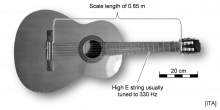CF/AR/thermoplastic hybrid yarns for requirement-based thermoplastic composites with outstanding, scalable stiffness, strength, crash and impact property combinations
Fibres Yarns Composites Textile machinery
Abstract
Within the framework of the IGF research project (21004 BR/1), material concepts based on two yarn formation technologies were realized at the ITM and CF/AR/PA6 and rCF/rAR/PA6 hybrid yarns for thermoplastic composites meeting requirements with outstanding, scalable stiffness, strength, crash and impact property combinations were produced. The influence of carding, draw frame and roving frame (MK1) and air texturing unit (MK2) parameters and fiber volume fractions on the mechanical properties were analyzed to develop requirements-based and defined engineered yarns and composites based on them. The investigated yarn formation technologies complement or partly compete with each other, but thereby also represent a broad technology spectrum. This generates a broad effect for the application of the results for product development in numerous German and often on few technologies specialized SMEs of textile technology.
Report
Introduction, problem definition and aim
Fiber-reinforced plastic composites are designed according to required stiffness and strength or impact and crash properties. Complex, overlapping load scenarios are only taken into account to a very limited extent. There are first practical approaches for realizing composite components, e.g. the B-pillar of an automobile [1]. In which composites (e.g., carbon fiber prepregs) are combined with metallic components (e.g. steel sheets) in order to achieve the necessary damage tolerance along with high weight-specific stiffness and strength. In such concepts, hybridization takes place at the macro (structural level) or meso (yarn level) level and requires extremely complex and cost-intensive manufacturing processes [2-4]. Furthermore, these components also have highly pronounced interlaminar interfaces, where complex stresses generate high shear stresses. As a result, premature structural failures occurs due to delamination [5-8]. In order to overcome these disadvantages and for use in future developments, a concept is developed and implemented in the project presented here. The approach provides the design of the combination of various fiber components by hybridization at the micro-level (within a yarn/fiber level), thus maximizing their property potentials. The use of recycled high-performance fibers also results in significant advantages over conventional composites in terms of sustainability, resource efficiency and cost-effectiveness.
The project aims to create a new three-component class of materials hybridized at the micro level for thermoplastic lightweight applications. By combining the reinforcing fibers such as carbon and aramid, it is possible to combine high stiffness and strength with high crash and impact properties by varying the reinforcing fiber proportions and fiber makeup in a way appropriate to the load case. Fig. 1a schematically shows the properties of state-of-the-art CF/AR hybrid composites (Fig. 1a bottom, highlighted by an ellipse) according to state of the art, from engineered yarns to be developed (top, area within the dashed lines) and the theoretical material potentials (top, colored lines), each depending on the fiber volume fractions. The systematic investigation of the influence of the material-specific fiber volume fractions for a scalable composites design was carried out in five stages (CF/AR or rCF/rAR: 50/0 %; 40/10 %; 25/25 %; 10/40 %; 0/50 %).
The development work focused on three main areas. The first focus was the further development of the process technology so that the composites based on engineered yarns exhibit high strength and stiffness due to low fiber damage, high uniformity and high fiber orientation. The second focus was the first-time implementation of the homogeneous blending of three fiber materials at the micro-level. The third focus was designing the engineered yarns so that outstanding, scalable stiffness, strength, crash and impact property combinations can be set explicitly for a wide range of requirements (Fig. 1a).
For the concrete realization of the desired goal, CF/AR/PA6 or rCF/rAR/PA6 hybrid yarns were developed using two material concepts (Fig. 1b) based on two yarn formation technologies (Fig. 1a) for the production of thermoplastic composites with outstanding, scalable stiffness, strength, crash and impact property combinations. The interrelationships between process parameters and material-yarn composite properties were analysed. A sound knowledge for the material-dependent design of the engineered yarns could be achieved. Furthermore, the best possible material and process parameters for specific applications was derived and a process guide was prepared for the control of the manufacturing processes for the SMEs. A detailed description of the development work can be taken from the final report.
Acknowledgement
The IGF project 21004 BR/1 of the Forschungsvereinigung Forschungskuratorium Textil e. V. is funded through the AiF within the program for supporting the „Industriellen Gemeinschaftsforschung (IGF)“ from funds of the Federal Ministry for Economic Affairs and Climate Action on the basis of a decision by the German Bundestag.
Contact: matthias.overberg@tu-dresden.de
Technische Universität Dresden
Fakultät Maschinenwesen
Institut für Textilmaschinen und Textile Hochleistungswerkstofftechnik (ITM)
01062 Dresden













